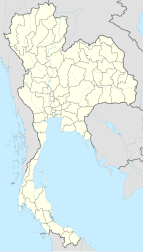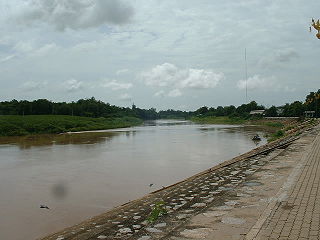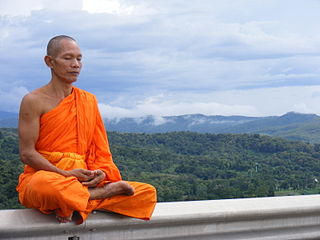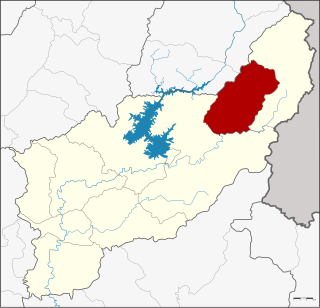| Ban Khung Taphao บ้านคุ้งตะเภา (English: Bend of Argosy Watercourse Village) | |
|---|---|
| Village | |
Kungthapao villagers performs a ceremony to worship about a stream Thailand. | |
| Coordinates: 17°39′24.44″N100°8′54.56″E / 17.6567889°N 100.1484889°E Coordinates: 17°39′24.44″N100°8′54.56″E / 17.6567889°N 100.1484889°E | |
| Country | Thailand |
| Province | Uttaradit |
| Amphoe | Mueang Uttaradit |
| Tambon | Khung Taphao |
| Government | |
| • Phu Yai Ban | Somchai Samphaothong |
| Time zone | Thailand (UTC+7) |
| Postal code | 53000 |
| Chief watercourse | Nan River |
Ban Khung Taphao (Thai : บ้านคุ้งตะเภา) is a village in the Khung Taphao subdistrict of Mueang Uttaradit of Uttaradit Province, Thailand.

Thai, Central Thai or Ayutthaya or Siamese, is the sole official and national language of Thailand and the first language of the Central Thai people and vast majority of Thai of Chinese origin. It is a member of the Tai group of the Kra–Dai language family. Over half of Thai vocabulary is derived from or borrowed from Pali, Sanskrit, Mon and Old Khmer. It is a tonal and analytic language, similar to Chinese and Vietnamese.

Uttaradit is one of the northern provinces (changwat) of Thailand. Neighboring provinces are Phitsanulok, Sukhothai, Phrae and Nan. To the east it borders Xaignabouli of Laos. Uttaradit is 488 km north of Bangkok, and 238 km southeast of Chiang Mai.

Thailand, officially the Kingdom of Thailand and formerly known as Siam, is a country at the center of the Southeast Asian Indochinese peninsula composed of 76 provinces. At 513,120 km2 (198,120 sq mi) and over 68 million people, Thailand is the world's 50th largest country by total area and the 21st-most-populous country. The capital and largest city is Bangkok, a special administrative area. Thailand is bordered to the north by Myanmar and Laos, to the east by Laos and Cambodia, to the south by the Gulf of Thailand and Malaysia, and to the west by the Andaman Sea and the southern extremity of Myanmar. Its maritime boundaries include Vietnam in the Gulf of Thailand to the southeast, and Indonesia and India on the Andaman Sea to the southwest. Although nominally a constitutional monarchy and parliamentary democracy, the most recent coup in 2014 established a de facto military dictatorship.


















